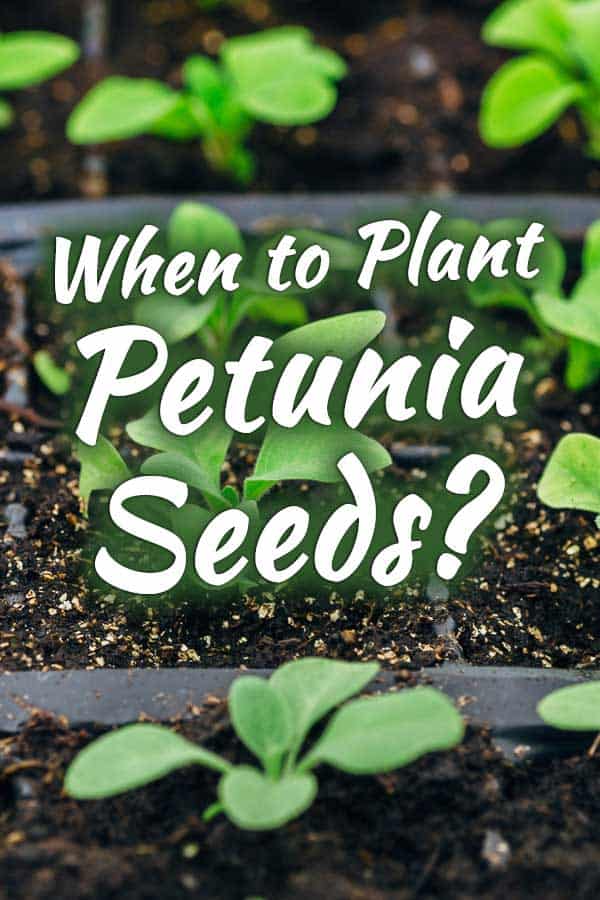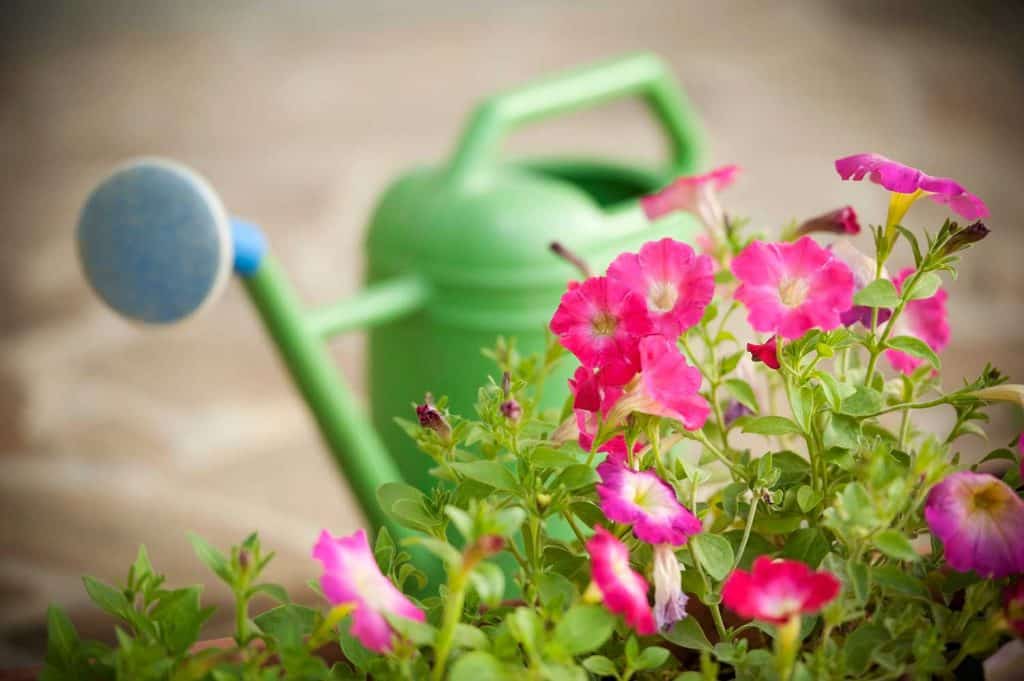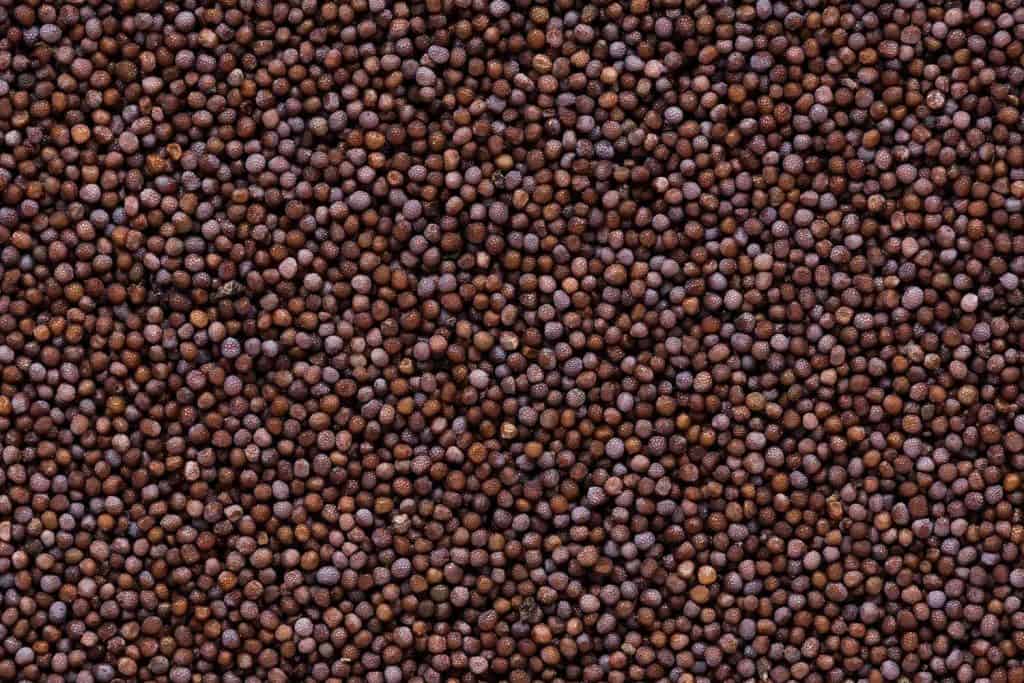 Petunias are such a delightful flower. If you are fairly new to gardening and looking for plants that are relatively carefree yet abundantly beautiful, then petunias are the perfect choice for you! Right now, you may be wondering to yourself, ‘When is a good time to plant petunia seeds?’
Petunias are such a delightful flower. If you are fairly new to gardening and looking for plants that are relatively carefree yet abundantly beautiful, then petunias are the perfect choice for you! Right now, you may be wondering to yourself, ‘When is a good time to plant petunia seeds?’
Sow petunia seeds indoors for approximately 10 weeks prior to the intended outdoor planting date. This should be sometime after the danger of frost has passed. Depending on where you live, this could be anytime from late February to early March in warmer regions or late April, early May in cooler areas. It is important to check your local frost date information beforehand.
Now that you know petunias should be planted in springtime following the last frost of the season, let’s take a closer look at this in more detail below. We will discuss how to germinate petunia seeds, how long it takes for petunias to grow from seeds and whether or not it is easy to grow them. We will also review the best time to pinch petunia seedlings and when to collect petunia seeds.
So, if you’re ready to learn more about planting petunias, then let’s get started!
How Do You Germinate Petunia Seeds?
It is important to properly germinate petunia seeds in order for them to grow into lush, vibrant blooms. They are a moderately easy flower to grow from seeds, provided that you follow these five simple steps:
Step One
Petunia seeds are minute and need intense light to germinate. It is best to start them indoors (and in trays) at least 10 weeks prior to the predetermined outdoor planting date. Begin by filling a planting tray with damp potting soil. Spread the petunia seeds along the surface of the soil. Press the seeds gently against the soil without covering them. Gently mist the soil with water.
Step Two
Cover the germinating tray with plastic wrap and move it to a sunlit location that is between 70 and 85 degrees Fahrenheit. Seeds should begin sprout approximately 7 to 10 after planting. Intense heat and light are needed at this stage for seeds to germinate properly.
Step Three
As soon as the seeds begin to sprout, remove the plastic wrap and move the tray to a cooler location, somewhere around 65 degrees Fahrenheit. Use a fluorescent light on the plant, placed 4 to 6 inches above the seedlings. Leave the light on for 12 to 16 per day. Continue to adjust the light, making sure it stays at least 4 inches above the top of the plant as it grows.
Step Four
When the seedlings have 3 true leaves, it is time to transplant them into individual, biodegradable peat containers. Fill the containers with potting pots soil and place 2 or 3 seedlings into each container. Be sure to water the soil and keep it moist. Put the seedlings near a bright window with plenty of sunshine. Keep them there until it is time for outdoor planting.
Step Five
When the petunias are about 2 months old, place the peat containers outside during the day in full sunlight to acclimatize them. Be sure to bring them indoors at night. Repeat this pattern for 4 or 5 days and then transplant the seedlings into hanging baskets or a garden bed.
How Long Does it Take to Grow Petunias from Seeds?
As mentioned above, petunia seeds take approximately 7 to 10 days to grow. Seeds will germinate within 1 week if sown in ¼ inch-deep potting soil that is moist and fertilized. The soil temperature should be between 65 and 75 degrees Fahrenheit for proper germination. In good growing conditions, the plant should begin to flower and produce buds in as little as 6 to 8 weeks.
Is it Easy to Grow Petunias from Seeds?

Growing petunias from seeds is usually considered fairly easy to do. However, growing them from transplants or commercially-grown seedlings is even easier! Transplanted petunias have a better chance of growing outdoors, as they are already established and have been ‘hardened’ during the final step of the germination process (see above under step five of the subheading entitled How Do You Germinate Petunia Seeds?)
When Should I Pinch Petunia Seedlings?
It’s okay to pinch petunia seedlings for the first time when they have 3 sets of true leaves. This will encourage the original leaves to fall off, stimulating new growth and allowing branches to develop beneath the leaves. If you pinch them again when they are about 6 inches tall, they’ll be ready for transplanting outdoors in a week or two, provided that all danger of frost has passed.
Pinching out the tip of a petunia is important as it releases growth hormones, prompting the plant to blossom and flourish. This also helps new transplants get established faster so pinch all petunias as soon as you set them out in the garden.
How Do You Collect Petunia Seeds?

When selecting petunia seeds for the following spring, be sure to pick healthy, disease-free seeds from your favorite plants in late summer or early fall, near the end of the growing season. A week or two prior to clearing out, stop deadheading so the plants have sufficient time to form seed pods naturally. Once the flowers fade and die off, the seed pods will develop and you can collect them.
The correct way to gather petunia seeds is to use a clean, sharp pair of garden scissors and cut the seed pods off the plant, placing them in a paper bag. Be sure to label each bag so you know exactly which seeds are which. Do not use plastic bags as seeds can spoil inside them. Once you have collected enough seeds, spread them across a screen or piece of newspaper and let them dry-out at room temperature for at least a week.
Store the seeds inside brown paper bags or envelopes in a cool, dark place for the winter. The temperature of the room should be around 40 degrees Fahrenheit. This will ensure optimal preservation of the seeds until the next growing season. Be careful not to damage or crush the seeds while in storage. Keep them dry at all times and monitor the temperature of the room regularly. If the seeds freeze or overheat, they will not germinate the following year.
Summary
In summation, it is important to sow petunia seeds indoors approximately 10 weeks before the intended outdoor planting date. This should be after the danger of potential frost has passed, which could be anywhere from late February to early March or April or late April to early May, depending on where you live.
It is important to always check your local frost date information beforehand to ensure the best growing conditions for your petunia plants. Good luck and happy gardening!
Love what you read? Help spread the word by pinning the image below to your Pinterest profile.

Even More About Petunias
We think you'll find these posts interesting t00 -

Thank you so much for the well explained instructions.
Dankjewel voor deze informatie, petunia is
mijn favoriete bloem nu weet ik meer over het zelf kweken petunia.
Thanking you for such valuable information. It is much appreciated.